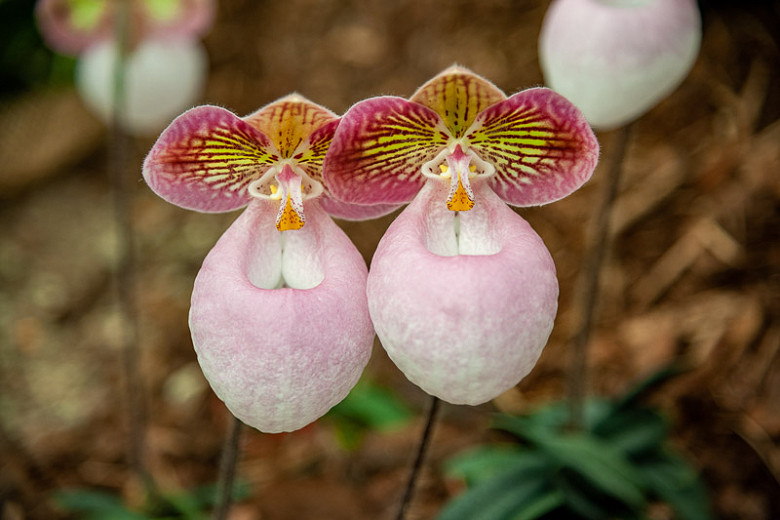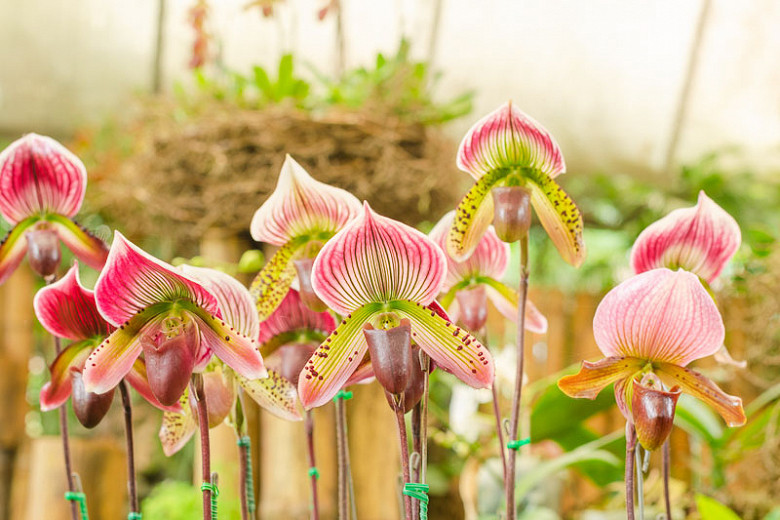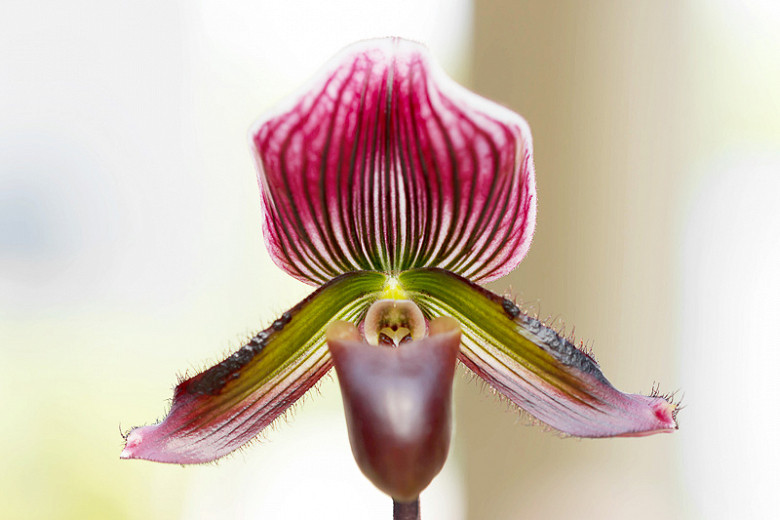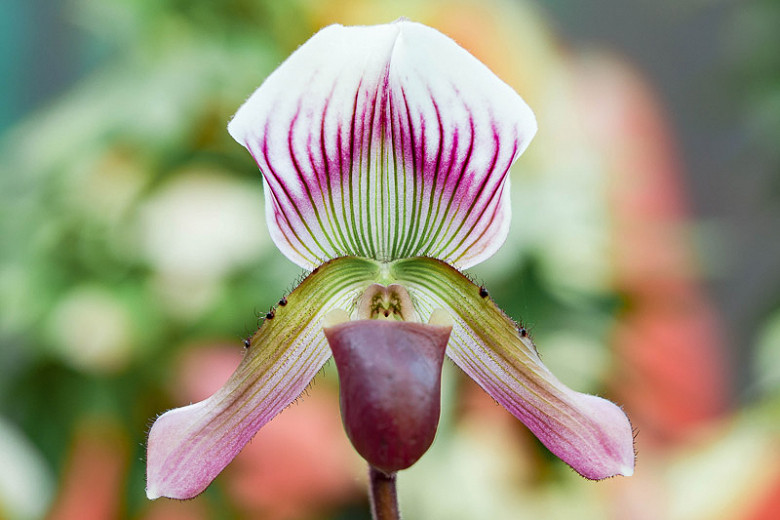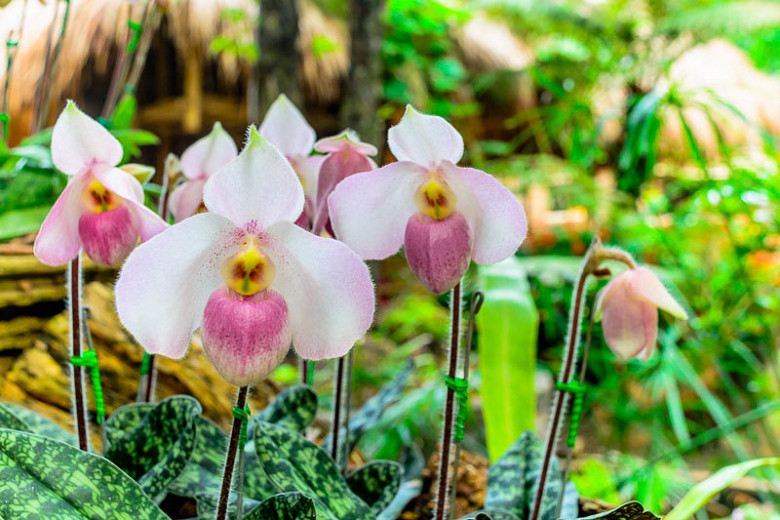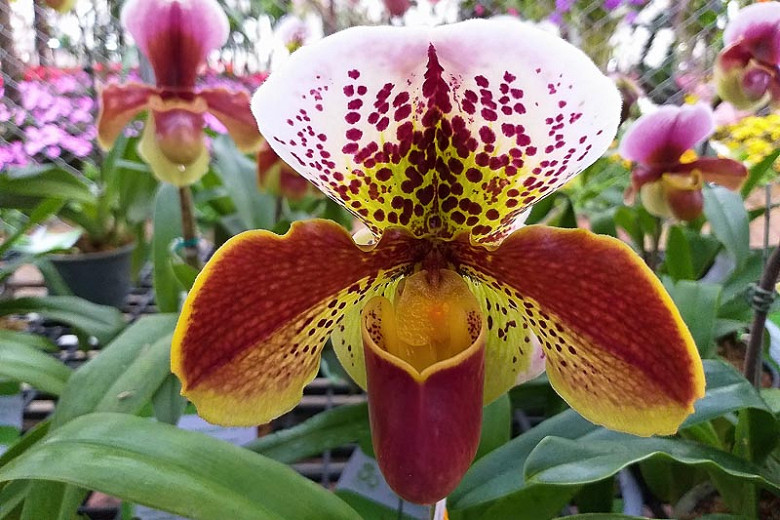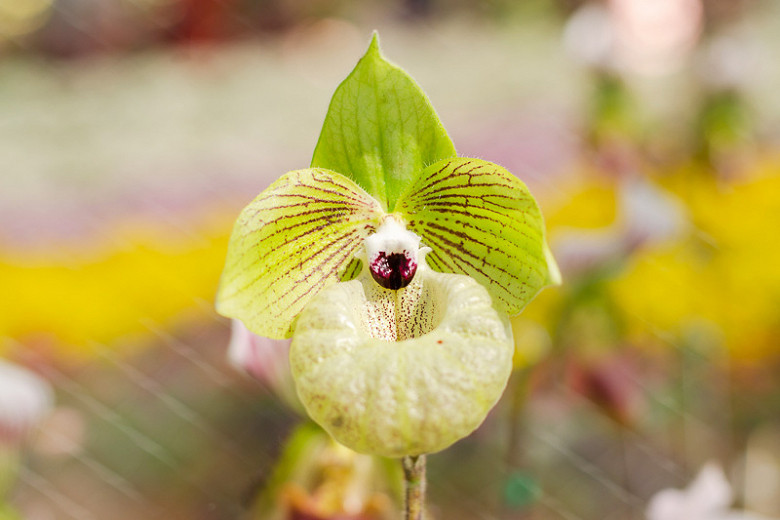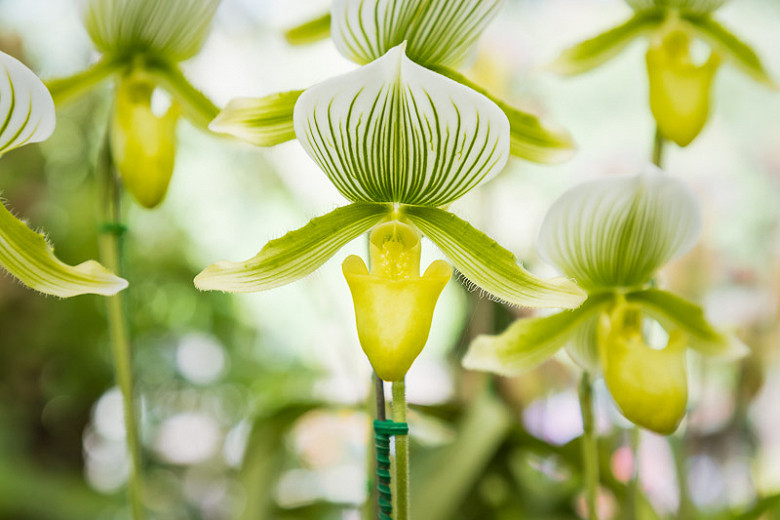Paphiopedilum micranthum (Tiny Flowered Paphiopedilum)
Paphiopedilum micranthum (Tiny Flowered Paphiopedilum) is a terrestrial or lithophytic orchid boasting charming flowers, 2-4 in. across (5-10 cm), adorned with a pink to whitish pouch, pale yellow sepals with purple hues, and a circular, white and yellow staminode dotted of red. Blooming in the spring and summer, the flowers are borne singly (rarely 2) on upright green stems spotted with purple. The blossoms are long-lasting, about 2-3 weeks. The attractive foliage of dark and light green mottled, oblong-elliptic leaves, up to 5 in. long (14 cm), is spotted purple underneath. The colorful leaves make this orchid an attractive houseplant even when it is not in bloom. Native to China, in the southeastern province of Yunnan and northeastern Vietnam, Paphiopedilum micranthum grows in the forests on calcareous rocky soils or in the crevices exposed north between 3280-5580 ft. (1000-1700 m) of altitude. A particularly ornamental species for the flowers as well as for the foliage.
- Grows up to 3-10 in. tall (7-25 cm).
- Grows in an open medium in a shaded position in summer protected from direct sunlight but move to a bright, unshaded position in winter. An east or west window, or near a shaded south window is best.
- Needs a night temperature of 70-71°F (21-22°C) and a daytime temperature of 84°F (29°C) in summer. In winter, the average daytime temperature is 59-61°F (15-16°C) and 46-50°F (8-10°C) at night.
- Maintain high humidity (70-75%) for most of the year by standing the container in a tray of damp pebbles – do not mist.
- During the growing season (spring to fall), water abundantly, with slight drying between waterings. Reduce watering in winter but do not let the plant dry out.
- Feed every week during the growing season. High-nitrogen fertilizer at the beginning of the growing season, high phosphorus fertilizer at the end of the growing season.
- When the blooms are finished, cut the spike down to the level of the leaves. Continue watering and fertilizing and within a year a new growth will spike to begin the blooming cycle again.
- When the plant has finished blooming is a good time to repot your orchid. Repot every 2-3 years. Paphiopedilum orchids like to be tight in their pots. An average plant should have a 4-6 in. pot (10-15 cm).
- Large plants can be divided by pulling or cutting the fans of the leaves apart, into clumps of three to five growths.
- Generally disease free. Keep an eye out for aphids, glasshouse red spider mites, and mealybugs.
- Native to China, in the southeastern province of Yunnan and northeastern Vietnam.
Tips for reblooming
- Check regularly if the plant is secure in its pot and the root system is sound. If not, repot.
- Try applying a blooming fertilizer in the early spring months.
- Move the orchid to a cooler, brighter location for a week, then return it to its original location.
Requirements
| Hardiness | 9 – 12 |
|---|---|
| Plant Type | Orchids |
| Plant Family | Paphiopedilum – Slipper Orchids |
| Exposure | Partial Sun |
| Season of Interest | Spring (Early,Mid,Late)Summer (Early,Mid,Late) |
| Height | 3" – 10" (7cm – 25cm) |
| Water Needs | Average |
| Maintenance | Average |
| Soil Type | Loam |
| Soil pH | Acid, Alkaline, Neutral |
| Soil Drainage | Well-Drained |
| Characteristics | Showy, Evergreen |
| Garden Uses | Patio and Containers |
